Strategies to Enhance Recreational Opportunities
“Every year, American consumers spend more on outdoor recreation than they do on pharmaceuticals and fuel, combined. In fact, the impact of outdoor recreation on America’s economy is almost as big as that of hospital care.” This statement, from the Outdoor Industry Association’s (OIA) 2017 report on the outdoor recreation economy, only scratches the surface of the importance and impact that our parks and recreation systems have on our society. More than seven million Americans are directly employed in the sector, which outpaces industries such as the food and beverage industry (4.7 million), construction (6.4 million) and even computer technology (6.7 million). With such a wide-reaching impact, the United States is widely regarded a global leader in park development and management. Regionally, Michigan outpaces Ohio, Indiana, Illinois, and Wisconsin in direct jobs created (232,000 jobs), consumer spending ($26.6 Billion) and state and local tax revenue captured ($2.1 Billion). Sixty-three percent of Michigan residents participate in outdoor recreation each year.
Michigan Natural Resource Trust Fund
The 2017 report by OIA states that nationally the purchase of outdoor gear and vehicles, and dollars spent on trips and travel for recreational activities result in 7.6 million American jobs, $887 billion in outdoor recreation spending each year, and $125 billion in federal/state/ local tax revenue. These numbers represent a significant increase from the organization’s 2012 report, reflecting a 27% increase in consumer spending on recreation good and activities, and 20% increase in jobs, and a 36% increase in tax revenues.
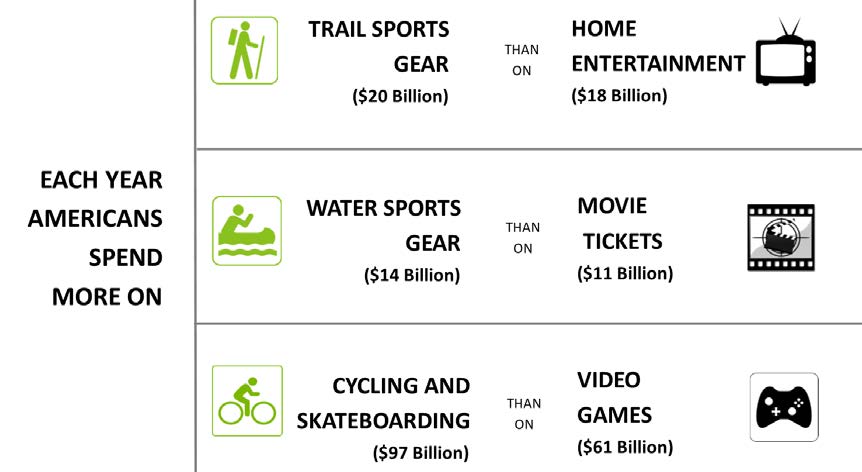
The Michigan Department of Natural Resources understands the benefits of parks and open space to its residents and businesses. In fact, one of the DNR Priority Statements is to “foster the growth of Michigan’s resource-based economy and be recognized as the leader in trail-based recreation.” To back this up, the State invests in the Michigan Natural Resource Trust Fund (MNRTF). This fund was established to support acquisition of land and development of parks and trails. In order to be eligible for this funding, communities are required to have a community parks and recreation plan that is updated every five years. This plan should include the following elements:
Community Description:
An overview of the community, its demographics, natural features, and economic condition.
Administrative Structure:
A summary of how the parks and recreation facilities are managed, including staff, volunteers, and appointed board or commissions.
Inventory of Existing Parks, Natural Resources and Recreation Facilities:
A description of the public (and private when significant) parks and recreation facilities in the community. Consider accessibility of parks and open spaces, particularly as the population ages. For example, if a park has a picnic area, there should be a few picnic tables that can accommodate wheelchairs—and be accessible by firm pathway. Consider, too, how park linkages can connect to surrounding neighborhoods and business areas.
Description of the Planning & Public Input Process:
It is important to include public input in the planning process, both to ensure the community’s needs are being met, and also to show support for local planning initiatives. Involve local recreation providers. These can be park supervisors, county, and state park staff where applicable. Neighboring communities, too, should discuss how together they can meet the recreation and conservation steeds of the region. In addition, local businesses that cater to creations, like outfitters and rental companies, should be included.
Goals & Objectives:
The planning process should result in a set of goals and objectives the community wishes to pursue in the short– and long-term.
Action Program:
The action program describes specific strategies for accomplishing the goals and objectives.
Now is a great time to be planning for recreation! Communities considering pursuing 2020 MRTF funding should have their recreation plans completed by March 2020 in order to submit a grant application by April 1, 2020. If you have any questions about the recreation plan process, feel free to contact staff at Giffels Webster.
One of Michigan’s biggest grant program success stories is the Natural
Resources Trust Fund. Since 1976, the Trust Fund has awarded more than $1 billion to local and state units of government to develop and improve high-quality, public outdoor recreation opportunities in all 83 counties. These projects emphasize the unique attributes that make Michigan a special place to live, work and play. Below are some projects that would not have been possible without the DNR grant funds.
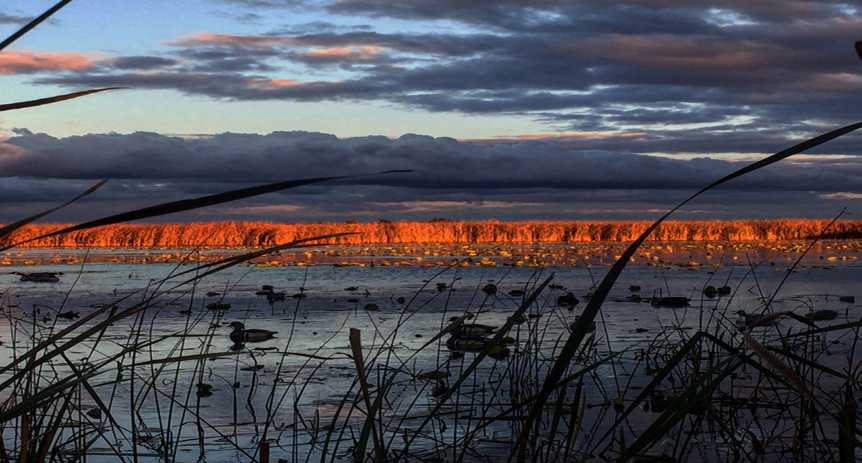
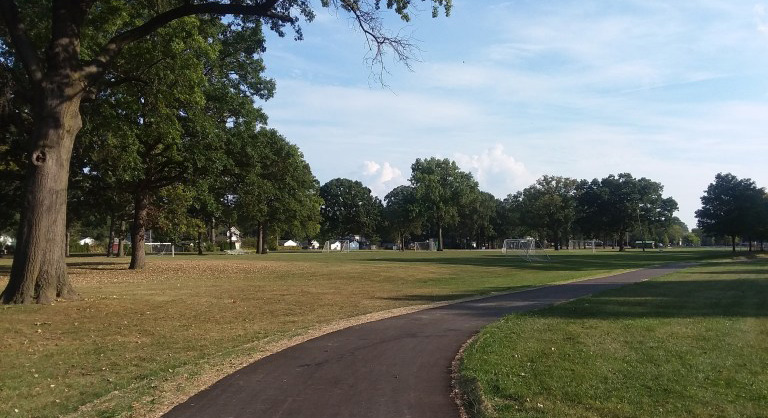
Planning & Zoning News from Our Communities:
The City of Brighton recently received the 2019 Vernon Deines Merit Award for an Outstanding Small Town Comprehensive Plan from the American Planning Association’s (APA) Small Town and Rural Planning (STaR) division. The City of Brighton’s Comprehensive Plan provides an update to the city’s 2012 Master Plan while incorporating a Downtown Plan, Recreation Plan and Complete Streets Plan. Our team is also assisting with implementation by creating a new R-5 missing middle housing zoning district and a downtown form-based code.
Giffels Webster helped White Lake Township secure a $1.4 million Michigan Natural Features Trust Fund (MNRTF) grant. The grant will fund the acquisition of the former Brendel Lake Campground to create a township park for the community to enjoy. The 57-acre property has more than 500 feet of lake frontage on Brendel Lake. “Receiving a MNRTF grant allows White Lake Township to continue improvement on recreation areas – a goal identified in its master plan,” said Jill Bahm, AICP, partner at Giffels Webster. “The grant writing process, often complicated and lengthy, is an important step we take to help our clients achieve planning goals.”
Michigan Natural Resources Trust Fund Grant – Lathrup Village, MI
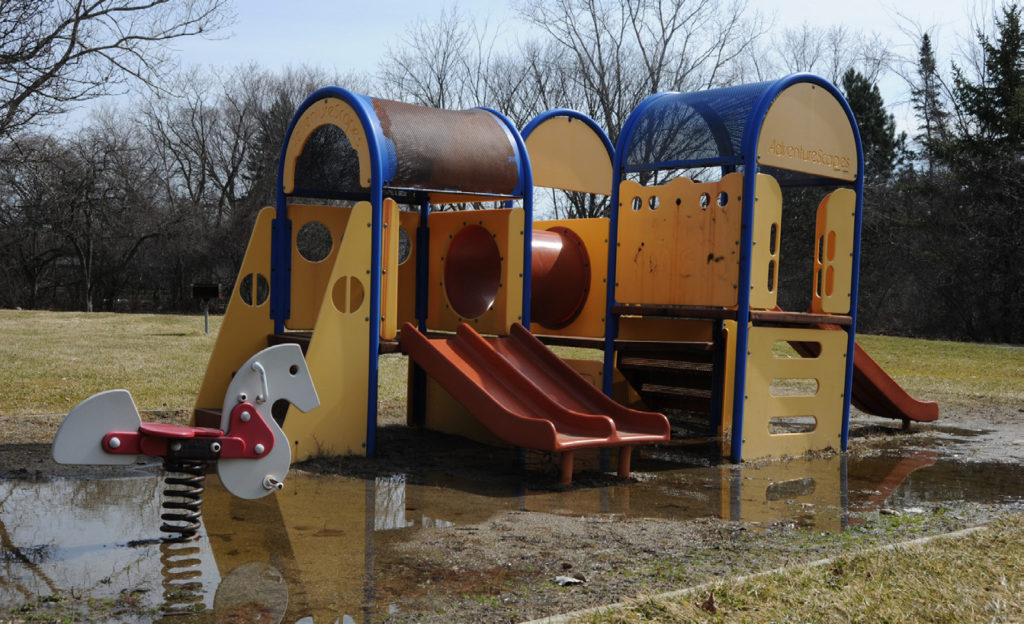
Goldengate Park – Before 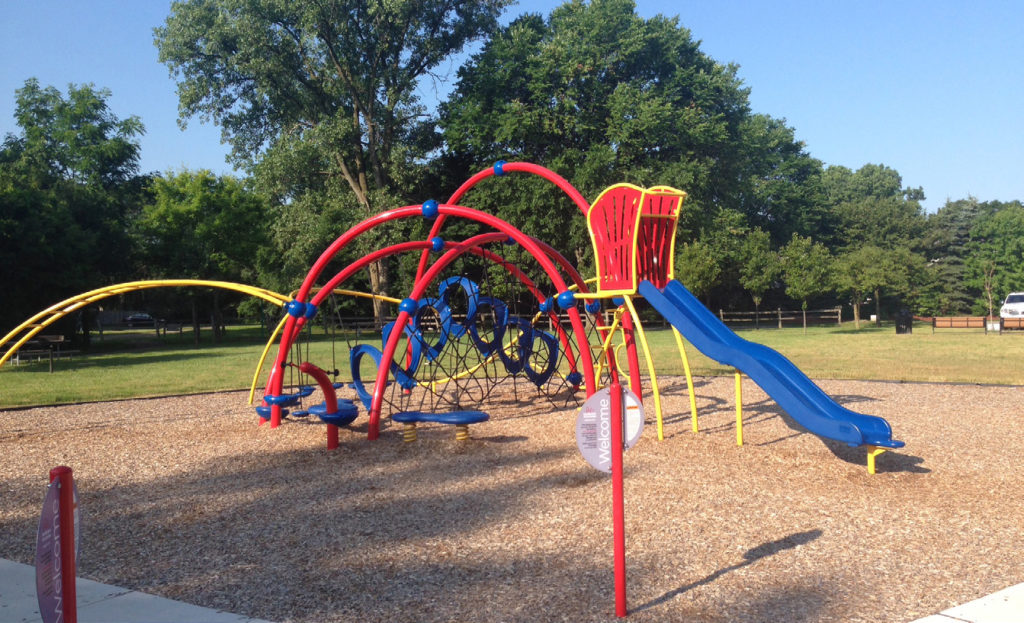
Goldengate Park – After
Our team assisted with the Parks and Rec Master Plan and MNRTF grant application, which resulted in a $50,000 grant for park improvements.
Giffels Webster will help you identify and leverage your unique resources to improve the assets and attractiveness of your community. Whether it is increased walkability and connectivity, better streetscape design and parking, more natural settings and gathering places or other changes to enrich your city, we will work in partnership with you on how to attract and retain businesses and residents.
As your municipal partner, we also review submitted site plans, conduct inspections, maintain records, prepare master plans, lead the planning, and construction administration process for capital improvement projects.
For more information please call us at 866.271.9663 and visit www.giffelswebster.com